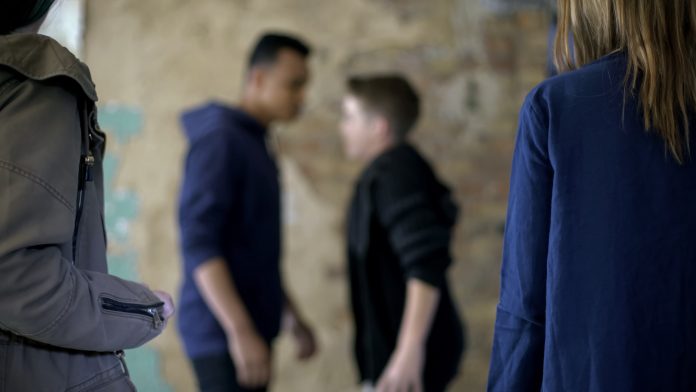Current solutions to youth violence are failing. Tate Gronow, from community research and social innovation charity The Young Foundation, says listening to the voices of experience would change that
Young people’s safety is in crisis, both in communities and online across the UK. Headlines frequently include harrowing news of young people being the victims of violence perpetrated by other young people, debates around young peoples’ access to social media, as well as the introduction of tougher restrictions on the sale of knives online after the Prime Minister called for an end to buying such weapons on the internet ‘without any checks or barriers.’
It’s vital the government continues to highlight the priority of tackling youth violence in our communities; the Youth Endowment Fund’s Children, violence and vulnerability 2024 report, which surveyed over 10,000 teenagers aged 13 to17, found that 20% reported being a victim of violence in the past 12 months, with 61% of these incidents resulting in physical injury. There is no denying children are at risk and this is all in the context of urgent mental health referrals for young people on the rise. But decisions cannot be made about young people, without them.
The need for stronger social media content regulation
Saying that services and systems designed to support and protect young people are stretched is an understatement. In a PM’s statement earlier this year, he highlighted the failings of authorities to intervene in supporting young people, and in particular, he flagged the undeniable role of social media in allowing violent content to be at the fingertips of young people. References were made to young people accessing ‘all manner of material […] on mainstream social media’; ‘children who have stopped going to school’ and ‘young people who have opted out of work or education’.
No one understands the impact of social media on young people more than young people themselves, and we must prioritise centring youth voice in decisions and policymaking if we want to create successful, sustainable and positive change that avoids more young people being victims and perpetrators of youth violence in our communities. Examples of this include groundbreaking youth-led research being undertaken to address these concerns through the #PeerActionCollective (PAC), a programme exploring the root causes of youth violence with young people and delivery partners across England and Wales, Co-op, The #iWill Movement, Department for Culture, Media and Sport, The National Lottery Community Fund, Youth Endowment Fund, and The Young Foundation. Speaking to peers in their communities, young people in Birmingham recognise the desensitisation to violence through unrestricted access to inappropriate and sometimes distressing content. As the PM notes, ‘with just a few clicks, people can watch video after horrific video. Videos that in some cases are never taken down.’
We are all too familiar with narratives around the damaging nature of social media, but we can’t let these negate the recognition of it as a space where young people turn to learn, connect, be entertained, and, importantly, provide a platform for their voice and opinion. The Young Foundation’s #PassTheMic campaign is doing just this by listening to the voices of the future to ask them what issues they want addressed, and share these with MPs and policymakers.
However, we can only embrace social media’s power as a vehicle for sharing and connecting alongside sharp recognition of its limits. We cannot be fooled into thinking that social media is a space we have control of and only need to look at the temporary TikTok ban in the US, with the UK Secretary of State for Science, Innovation and Technology, Peter Kyle, expressing concerns over the app’s use as a propaganda tool, whilst acknowledging ‘that young people should be free to explore all sorts of cultures and ideologies’.
The importance of acknowledging youth voices in violence prevention
Social media is a thriving, dynamic instrument through which youth voice can be heard by policymakers and those in positions to create change. In February, Janet Daby, Minister for Children and Families, met with the London PAC team in Tottenham to better understand the role schools can play in supporting and preventing young people from experiencing and engaging in violence in their communities. Insights from young people who have engaged with PAC highlight gaps in teachers’ knowledge and capacity for mental health support in schools, and they flagged wanting more education and training around mental health for teachers. This is just one example of meaningful engagement with youth voice, and future work and collaboration of this kind must be integrated into future reform.
If those in power make decisions about young people without them, they risk further alienating them, and perpetuating feelings of isolation that have contributed to the ‘unwritten rules that hold a nation together being ripped apart’. Adults cannot understand the complexity and nuance of what young people are faced with at home, in school and online without listening to them and fostering spaces where they feel genuinely heard and involved in change that will impact them. Young people want change and have hope for the future, and we must harness that power and insight to create a better world with them.
Visit the Peer Action Collective website to find out if there’s a team in your area and how you can engage and support the programme.
Support The Young Foundation’s #PassTheMic campaign @the_young_fdn on Instagram and TikTok.











